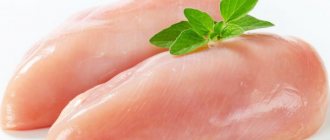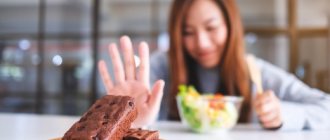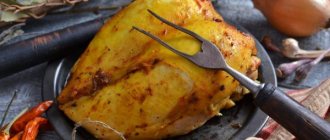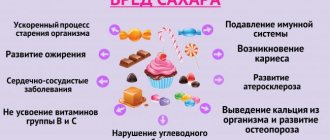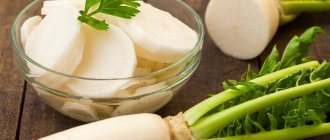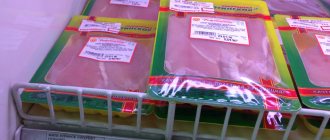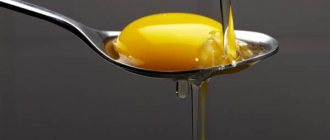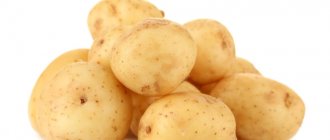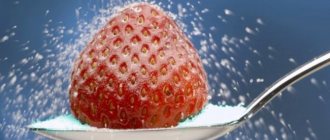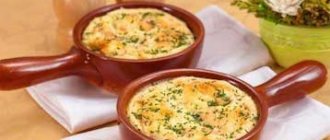Chicken breast is a great option for dinner. It is healthy - pure protein, and this is what you need to complete the working day. Breast is low in calories, has very little fat and cholesterol (especially if you cook and eat it without the skin). Finally, chicken breast goes well with so many foods and is very easy to pair with. And the chicken breast is ready in just 15 minutes.
The easiest way to prepare it is to simply fry it in a frying pan with a minimum amount of vegetable oil. Before frying, salt and pepper the breast and add your favorite spices. To prevent the meat from releasing juice, you need to place it loosely in the pan; it’s good to use a grill pan, but this is not necessary. This chicken breast can be put in a salad: just tear some greens into a bowl, chop a cucumber and top with the breast. You can season it with juice from the chicken (something still remains in the pan, with lemon juice and vegetable oil).
Or you can serve fried breast with your favorite side dish. This could be rice, couscous (it brews very quickly), vegetables stewed in a frying pan (you can use a frozen mixture).
We offer interesting options for chicken fillet dishes for a quick dinner.
What kind of bird is this?
Chicken is a domestic bird of the genus Gallus, the Pheasant family.
Practically does not fly. They are bred for eggs, meat, down and feathers. After centuries of selective breeding, hundreds of breeds with different physical characteristics emerged. There are certain hybrids of chickens that produce a lot of tasty meat, other breeds are bred for eggs, and there are so-called meat-egg breeds. A separate group should be noted of birds bred specifically for cockfighting, dwarf birds, and ornamental birds. The weight of an average chicken ranges from one and a half to five kilograms; a rooster can weigh 1 kg more. Modern chickens are descendants of birds that lived in the jungles of Southeast Asia and were domesticated by humans more than 10 thousand years ago. There are different opinions about who first domesticated the chicken. Researchers initially speculated that this agricultural turnaround occurred in India, China or Thailand. Now scientists have slightly changed their opinion and call Vietnam the place of “birth” of domestic chickens. Archaeologists also found bones of this bird in Egyptian tombs of the 18th dynasty, which is approximately 1400 BC. e. Around 500 BC, chickens appeared in Greece, then spread throughout Europe. And the bird reached the shores of North and South America only in 1350. Chickens are one of the most common pets today.
It is said that there are approximately 24 billion domestic chickens living on the planet at any given time.
Calories and carbohydrates in chicken breast
| Serving size - 80 grams | |
| Daily Value per serving in %* |
| Total fat 2g | 10% |
| Saturated fat 2g | 9% |
| Polyunsaturated fat 0g | |
| Monounsaturated fat 1g | |
| Cholesterol 53mg | 18% |
| Sodium 46 mg | 2% |
| Potassium 159 mg | 3% |
| Carbohydrates 0.5 g | |
| Protein 29.8 g | |
| Vitamin A 0% Vitamin C 0% | |
| Calcium 1% Iron 4% | |
| *Based on a 2000 calorie diet |
Chicken breasts are a great source of protein and contain almost no fat or sodium. They also have zero grams of carbohydrates, making them the ultimate low-carb food available. The approximate glycemic index for chicken breast (raw, skinless, boneless) is zero. Because it is such a versatile food, it can easily be included in any healthy diet.
To calculate how many calories are in chicken breast, you need to consider the cooking method and additional sources of calories that may be used during cooking. First of all, it is affected by the size of the chicken breast. One serving usually weighs about 100 grams and is about the size of your palm.
Many packaged chicken breast portions, however, are much larger. So if you decide to use it, most likely your portion is larger.
And, of course, if you leave the skin on the fillet, this immediately increases the proportion of fat, calories and energy value. A whole chicken breast with skin contains 366 calories, 55 grams of protein, 0 grams of carbohydrates, 14 grams of fat, 4 grams of saturated fat and 132 milligrams of sodium.
The cooking method, as well as any sauces or dressings you add to it, also make adjustments. 85 grams of grilled chicken contains 170 calories, 1 gram of carbohydrates, 11 grams of fat and 15 grams of protein.
One medium-roast chicken breast contains 364 calories, 34 grams of protein, 13 grams of carbohydrates, 18 grams of fat and 697 milligrams of sodium. Boiled chicken breast with 113 calories is a different story
Warm salad with chicken breast
Photo: Shutterstock.com
- 200 g chicken fillet
- 1 small bunch of lettuce (any kind you like)
- 1 box of cherry tomatoes
- Freshly ground pepper
- 1 tbsp. l. natural yogurt
- 1 tsp. mustard
- 1 tsp. lemon juice
- 1 tbsp. l. vegetable oil
Step 1. Cut the chicken breast into large cubes and fry in a frying pan using a minimum of oil. Add salt and pepper during frying.
Step 2. Tear the salad into large pieces.
Step 3. Beat yogurt with mustard and remaining butter from the chicken. Salt and pepper.
Step 4. Mix chicken and salad. Top with sauce. You can add crackers.
Chemical composition of chicken fillet
The table shows the nutritional content (calories, proteins, fats, carbohydrates, vitamins and minerals) per 100 grams of product.
Chicken breast (fillet) contains vitamins and minerals: vitamin B3 - 16%, vitamin B6 - 25%, vitamin B12 - 20%, vitamin H - 20%, vitamin PP - 53.6%, choline - 15.2 %, magnesium - 21.5%, phosphorus - 21.4%, sulfur - 18.6%, zinc - 17.1%, chromium - 18%, cobalt - 120%., where % is the percentage of satisfaction of the daily requirement per 100 gr.
| The nutritional value | |
| Calorie content | 113 kcal |
| Squirrels | 23.6 g |
| Fats | 1.9 g |
| Carbohydrates | 0.4 g |
| Water | 73 g |
| Ash | 1.1 g |
| Vitamins | |
| Vitamin PP | 10.9 mg |
| Vitamin A (VE) | 70 mcg |
| Vitamin B1 (thiamine) | 0.07 mg |
| Vitamin B2 (riboflavin) | 0.07 mg |
| Vitamin B5 (pantothenic) | 0.8 mg |
| Vitamin B6 (pyridoxine) | 0.5 mg |
| Vitamin B9 (folate) | 4.3 mcg |
| Vitamin B12 (cobalamins) | 0.6 mcg |
| Vitamin C | 1.8 mg |
| Vitamin E (TE) | 0.2 mg |
| Vitamin H (biotin) | 10 mcg |
| Vitamin PP (Niacin Equivalent) | 10.7212 mg |
| Kholin | 76 mg |
| Macronutrients | |
| Calcium | 8 mg |
| Magnesium | 86 mg |
| Sodium | 60 mg |
| Potassium | 292 mg |
| Phosphorus | 171 mg |
| Chlorine | 77 mg |
| Sulfur | 186 mg |
| Microelements | |
| Iron | 1.4 mg |
| Zinc | 2.055 mg |
| Iodine | 6 mcg |
| Copper | 76 mcg |
| Manganese | 0.019 mg |
| Chromium | 9 mcg |
| Fluorine | 130 mcg |
| Cobalt | 12 mcg |
BJU content per 100 grams of chicken fillet
Chicken breast is a dietary food. Knowing the protein content in it, you can easily calculate how much of the product you need to eat. For the normal functioning of the human body, it is necessary to consume 80 grams of protein per day. There are at least 23 grams of protein per 100 grams of finished fillet. To meet the daily requirement, you need to eat 300 grams of this meat, taking into account other products.
Due to its high protein content, breast meat is ideal for reducing body weight without harming muscle mass.
Based on the type of meat preparation, the content of BJU per 100 grams changes as follows:
| Cooking method | Proteins, g | Fats, g | Carbohydrates, g |
| Raw | 23,6 | 1,9 | 0,4 |
| Boiled | 27,6 | 1,8 | 0,5 |
| Smoked | 18,1 | 5,0 | 0,1 |
| For a couple | 23,6 | 1,9 | 0,1 |
| Fried | 25,2 | 7,8 | 1,3 |
| Baked | 24,8 | 1,6 | 0,4 |
| Grill | 19,0 | 7,1 | 4,1 |
Fresh chicken has a lower protein level compared to oven-baked and boiled chicken. This is explained by the fact that during cooking, about 20% of the water disappears. Therefore, a 100-gram fillet after cooking weighs 75-80 grams. As a result, the amount of protein in chicken breast increases after processing.
Fillet is easily digestible and does not burden the gastrointestinal tract. For this reason, you can eat it even in the evening without fear of gaining extra pounds. It refers to the white type of meat, according to doctors, culinary specialists and nutritionists. The dietary product contains much less fat compared to red meat. There is a negligible amount of carbohydrates in it. The red variety includes beef, pork, lamb, and turkey.
We use a thermometer
The easiest way to tell how done a chicken breast is is to check its temperature. You'll want to measure the temperature at the thickest part of the breast using a thermometer or probe. Hold the device so that it is parallel to the work surface and does not touch the bone. Bake the breasts in an oven preheated to 160°C. At the same time, the temperature inside the piece when ready should be 80 °C.
After cooking (as with any lean meat), be sure to let the chicken rest for at least 7 minutes. This pause will allow the juices to distribute evenly inside the piece. The chicken meat fibers will move away from the thermal shock and straighten out - this also benefits the taste of the finished chicken breast.
Tagliatelle with chicken breast, oyster mushrooms and blue cheese sauce
The nutritional value
The first thing worth noting is the low calorie content of this meat. 100 grams of chicken breast contain 113 kcal, of which only 1.9 grams are fat, 23.6 grams are protein, 0.4 grams are carbohydrates.
The minimum amount of protein a person needs is 50-100 grams (based on 0.8-1 grams per 1 kilogram of weight). Therefore, 200-400 grams of breasts are enough to avoid a deficiency. For athletes who need 2-2.5 g of protein per kilogram of weight, this volume is not enough, but the remaining needs can be covered by other products or sports nutrition.
Knowing how much protein is in boiled chicken breast, it’s easier to think through your diet and achieve your goals. Such a product should be part of the diet of people who aim to “get lean,” that is, reduce the amount of fat without harming the muscles.
How does the protein content change depending on the method of cooking meat? Here the trend is as follows:
- when cooked, brisket contains 29.8 grams of protein (per 100 grams);
- during the frying process, the volume of the useful element does not decrease and remains approximately at the same level;
- steaming ensures that 23.6 grams of protein enters the body;
- smoking reduces the volume of incoming useful elements to the level of 19.7 g.
Now you know how much protein is in chicken. The only question is why its level in a raw product is lower than in one already prepared by cooking. This is easy to explain - raw meat contains 15-20 percent water, which is lost during the cooking process. Thus, a piece of breast that weighed 100 g before processing turns into 70-80 grams. It is logical that the protein content in chicken becomes higher after cooking.
Chicken beef stroganoff
Photo: Shutterstock.com
- 500 g chicken fillet
- 2 onions
- 2 tbsp. l. vegetable oil
- 100 g sour cream
- 1 tbsp. l. flour
- Salt and black pepper
Step 1. Cut the chicken into long slices.
Step 2. Place the chopped meat in a bag, add flour and shake until the entire chicken is coated with flour.
Question answer
Is it possible to eat chicken giblets? Step 3. Peel the onion, cut into half rings, fry in vegetable oil until soft and golden brown.
Step 4. Heat a little vegetable oil in another frying pan and fry the prepared chicken in it.
Step 5. Place the meat on the onion or vice versa. Mix. Salt and pepper.
Step 6. Simmer together for 2 minutes, then add sour cream and simmer over low heat for about 10 minutes. If you feel like there isn't enough sauce, you can add more sour cream or add a little chicken broth.
Step 7. Serve with mashed potatoes, buckwheat porridge, boiled potatoes.
Health Benefits of Breast
Chicken breast is an excellent source of lean protein. Protein helps the body maintain existing muscle mass, as well as build new muscle mass if you are doing a strength training program.
Chicken breast also has an excellent chemical composition: it is a very good source of selenium, phosphorus, vitamin B6 and niacin. The amount of sodium may vary depending on the cooking method, but it is also generally very low.
Chicken harm
Many people refuse chicken precisely because it is loaded with preservatives and antibiotics. They negatively affect the body, as they cause a number of diseases. There are incredibly few nutrients left in the composition. Like any other product, chicken meat can cause allergic reactions. This is mainly due to the cooking method.
- Remember that smoked and fried chicken can contain a lot of cholesterol, which can clog blood vessels.
- If meat is not thoroughly cooked, there is a risk of becoming infected with bacteria that are dangerous to the human body.
- Avoid skins; if possible, remove them before cooking. This is a very fatty part of the meat, which means it contains a lot of cholesterol.
BJU in raw, boiled, smoked and fried chicken breast
Long-term nutrition programs or constant adherence to the principles of proper nutrition imply creating a menu of healthy and varied dishes. If you are tired of boiled chicken, you can fry or bake this product.
The calorie content and balance of BZHU will change, take this fact into account when selecting your diet.
| Method of preparation/KBJU | Raw | Boiled | Smoked | Fried |
| Calories, kcal | 137 | 113 | 117 | 162 |
| Amino acids, g | 24 | 28 | 18 | 25 |
| Lipids, g | 2 | 1.8 | 5 | 8 |
| Carbohydrates. G | 0.4 | 0.5 | 0.1 | 1.3 |
Raw meat contains more water, and when boiling and other cooking methods, the liquid evaporates, so the macronutrient content of cooked meals differs from raw meat.
To introduce carbohydrates and fiber into your diet, you can add vegetables to the steamer where the fillet is cooked 5 minutes before the meat is ready.
Boiled
To get the maximum benefit from boiled meat, it is better to boil it without skin, and be sure to drain the first broth.
Boiled chicken breast bju without skin per 100 g:
- 29.8 g protein;
- 1.8 g fat;
- 0.5 g carbohydrates.
Calorie content is 137 kcal.
This dish is recommended for consumption even in early childhood.
The broth obtained during the boiling process can also be consumed; its calorie content, if nothing except salt is added, is 18.8 kcal per 100 ml. In the broth, the amount of protein is reduced to 3.9 g, and fat to 0.3 g. For those who are watching their figure, the main question is how many carbohydrates are left? The smallest amount is 0.1 g.
Fried
The most high-calorie part of all chicken is the skin. If you fry without it and with a minimum amount of vegetable oil, then the chicken breast kbju will be:
- 27.61 g proteins;
- 5.0 g proteins;
- 1.03 g carbohydrates.
Nutritional value per 100 grams – 159.50 kcal or 667 kJ.
If the skin is not removed, the life expectancy will be:
- 25.3 g protein;
- 8.1 g fat;
- 1.4 g carbohydrates.
Calorie content is 177 units.
The nutritional value of cooked meat in a frying pan without oil will be only 110 kcal. But even adding herbs, lemon juice and other ingredients, you will have to calculate the calorie content separately.
This jump in energy value is due to the fact that the skin itself contains 212 kcal. Although there is a lot of controversy regarding its use. It is used to prepare sausages and stuff them with all kinds of fillings, including vegetable ones.
On the other hand, it is the skin that is considered the most dangerous part of the chicken, since in addition to its high fat content, many harmful bacteria accumulate on the surface. These microorganisms can cause an inflammatory process in the pancreas or stomach, but provided that the dish has not undergone full heat treatment.
Baked
Baking allows you to cook a very tasty chicken breast without increasing the nutritional value of the dish. It is recommended to pre-marinate the meat in brine for 3 hours to ensure a tender and not over-dried fillet. Bju dishes are:
- 19.7 g protein;
- 6.2 g fat;
- 3.6 g carbohydrates.
Nutritional value - 148.5 units per 100 g of dish, cooked in the oven in an open manner and without removing the skin.
When baked without skin or vegetable oil, the calorie content of the dish is closest to that of raw meat and equals 113 units. When baked in a sleeve, the nutritional value is 117 units.
By cooking the breast in the oven using sour cream, the calorie content of the dish will seriously increase and reach 195 kcal. When baked in foil, the nutritional value of 100 g of the dish will be 141.5 kcal. In fact, with this method of baking, the meat turns out to be stewed, and therefore juicy and soft.
Raw
In raw form, bju fillet:
- 23.6 g protein;
- 1.9 g fat;
- 0.40 g carbohydrates.
Calorie content – 113 kcal or 473 kJ.
The low calorie content of meat is indicated by its characteristic white color, which is maximally visible after heat treatment. And in order to preserve as much as possible all the beneficial substances of the breast, before cooking, chefs recommend cutting it lengthwise.
The calorie content of broiler breast is not much different from regular chicken, even given its large size. On average, nutritional value ranges from 116 to 119 units.
Grilled
Grilled chicken breast is tender and juicy. If you cook it with skin, then the yield will be:
- 29.2 g protein;
- 3.61 g fat;
- 0.21 g carbohydrates.
Calorie content – 155 units or 647 kJ. If you get rid of the skin, the nutritional value will decrease to 129.4 kcal.
By refusing to use vegetable oil, you can get a dish with a calorie content of 122.13 units. However, it is not recommended to completely abandon the use of oil, due to the fact that the pulp dries out quickly. Instead of oil, you can use sauce or marinade, which you can periodically pour over the meat during cooking. You can grill chicken breast along with vegetables. Then no additives will be required, the meat will not be dried out, as it will take moisture from the vegetables.
Equality is everything
Try to cook breasts of uniform thickness. You've probably noticed that the thin edge of the breast is already drying out in the pan, and its thick part is barely starting to cook. How to prevent this? Place a piece of raw breast between two layers of cling film or put it in a plastic bag with a lock (Ziplock). Using a rolling pin, “roll out” the breast, starting at the thick end until the entire piece is evenly thick. If you are making chicken schnitzel or a similar dish, carefully score the chicken breast and open it like a book, then roll it up. But there is no need to beat the breast.
BJU in other parts of the chicken
To diversify the menu, you need to include all parts of the bird in your nutrition program. The thigh and drumstick contain more fat, which means their nutritional value is higher.
Chicken thigh
Depending on the method of heat treatment, it contains from 180 to 230 kcal, and the KBJU of a thigh baked with skin in foil is distributed as follows - 227/20/15/1.8 g per 100 g.
Chicken drumstick
Less caloric than thigh due to the large number of muscle fibers. A leg baked in the oven has the following KBJU indicators - 174/20/10/0.7 g per 100 g.
Chicken wing
This part of the bird contains little meat, it is difficult to remove the skin from the wing, so the caloric content and fat content of the wing is higher than other parts:
| Wings | Calorie content, kcal | Proteins, g | Fats, g | Carbohydrates, g |
| Baked in the oven | 249 | 21 | 16 | 4 |
| Smoked | 301 | 23 | 23 | 0.3 |
| Fried | 267 | 21 | 18 | 7 |
Those who are planning a diet for weight loss should not include wings in the menu; it is better to choose a more dietary product.
Chicken in spicy caramel sauce
Photo: Shutterstock.com
- 500 g chicken fillet
- 40 g sugar
- 1 tbsp. l. water
- 5 g butter
- 2 teeth garlic
- 1 tsp. vinegar
- 2 tbsp. l. soy sauce
- Black and red pepper
- Salt
- Sesame seeds
Step 1. Heat the oil in a frying pan, throw in a clove of garlic, peeled and crushed with a knife. Heat together with the oil so that the garlic gives its smell to the oil.
Article on the topic
Chicken in Thai and Georgian style. How to cook delicious fillet Step 2. Cut the chicken meat into large pieces (2x2 cm).
Step 3: Remove the garlic from the oil and add the chicken to the pan. Fry.
Step 4. Salt and add spices.
Step 5. In a separate small frying pan, mix sugar with a little water and fry until dissolved. Stirring all the time, bring to a golden color. Place a small piece of butter into the caramel.
Step 6: Add caramel to chicken. Mix.
Step 7. Close the lid and keep on low heat for 5 minutes.
Step 8. Add soy sauce, vinegar, mix everything.
Step 9. Serve with any side dish (preferably with rice or rice noodles), sprinkled with sesame seeds.
Why do you need to calculate the amount of protein in chicken?
Knowledge of the amount of proteins contained in chicken breast is necessary for people who want to lose weight, as well as “cut”, that is, reduce fat mass without sacrificing muscle mass.
A balanced human diet contains about 50% carbohydrates, 30% proteins, 20% fats. If it is necessary to lose weight due to the fat component, this ratio should shift in favor of B and look like this:
- proteins - 45%;
- fats - 15-20%;
- carbohydrates - 35-40%.
Therefore, it is important to give preference to products containing large amounts of B, for example, chicken in any form.
But when following a diet, you should remember not only the B content, but also the fat in the meat and its total calorie content. Optimal ways to cook chicken for losing weight:
- boiling;
- baking;
- steaming.
Smoking and frying make chicken meat fattier and higher in calories. Such dishes contain many carcinogens, so they are harmful even for a person of normal weight.
Before you start cooking the chicken, you need to remove the skin. This part is very fatty and high in calories, so it is not suitable for dietary nutrition.
Don't overuse the heat
Whether you're grilling or pan-searing the breast, cook the chicken over moderate heat. The outside and inside should cook almost simultaneously.
If you want to achieve a spectacular appearance, use a grill pan. Remember to turn the breast over from time to time. If necessary, bring it to full readiness by reducing the heat. For bone-in breasts, first sear the chicken over medium-high heat and then finish cooking in the oven or grill using the residual heat from the coals.
Reception nuances
Knowing how much protein is in 100 grams of chicken makes it easier to plan your diet. Often athletes eat a daily portion (400-500 g) at a time. This is mistake. The best option is to stretch the meat over several stages. The product is quickly absorbed, does not cause gastrointestinal consequences or side effects, so there is no risk of fat gain (even if taken before bed).
The chemical composition of the product is particularly high in organic elements, which have a positive effect on the condition of the body, its internal organs and systems. White meat contains amino acids, collagen and elastin, without which it is difficult to imagine normal development.
As is clear from the article, the best cooking option is boiling or steaming. Another good way is baking in foil, which guarantees the preservation of important elements for the body and the juice of the product. It is recommended to combine chicken with vegetables, which makes this meal even healthier. After all, vegetables contain fiber - a key element for the normal functioning of the gastrointestinal tract.
Calorie content of the product in different versions
A boiled chicken breast without skin contains 137 kilocalories, with skin - 165 kilocalories.
What is the calorie content of boiled chicken breasts Subscribe Advertising on article 0 0 In the Middle Ages, weak children and the elderly, as well as the sick and wounded, were given chicken broth to drink as a tonic. And they gave us white poultry meat, mostly breasts. With a rather low level of medicine, our ancestors intuitively understood that this particular product contained a lot of proteins needed by the body and few hard-to-digest fats. Therefore, this part of the bird carcass can confidently be called a dietary product. The calorie content of boiled chicken breasts is quite low, and the health benefits are incomparably higher.
Don’t forget about the high calorie content of chicken skin - 212 kcal per 100 grams of product.
First, protein. There is about 30 g of it in 100 g of product. Therefore, the white meat of “sea fish” is eaten with pleasure not only by those losing weight, but also by bodybuilders: after all, protein is involved in the “building” of muscles.
- The calorie content of boneless chicken breast (fillet) per 100 grams is 113 kcalories; with bones, naturally this figure will increase to 137 kcalories. The energy value of breast with skin is 164 kcalories per 100 grams of product.
- The calorie content of boiled chicken breast is 95 kcalories per 100 grams of product, the rest of the calories remain in the broth. The calorie content of smoked chicken breast per 100 grams is 119 kcalories, but do not forget that in the manufacture of such a product preservatives and other impurities are added that are bad for health.
- The calorie content of fried chicken fillet per 100 grams of product is almost 197 kcal, which is obvious, since butter is a high-calorie product and I do not recommend eating such breasts for people losing weight.
There is a negligible amount of fat and carbohydrates in the poultry breast.
However, when calculating the calorie content of boiled chicken breasts, it is necessary to take into account several factors: whether the meat is with bones or without, whether there is skin, how long the product was cooked. Indeed, in its raw form, pure fillet has 115 kcal, meat with bones - 137. The largest amount of fat is in the skin.
Meat with it, but without bones, has a nutritional value of 165 kcal per 100 g.
The cooking method is also important. Naturally, when we fry something, we add oil to the pan - the product itself is very nutritious. After frying, the chicken is covered with such an appetizing golden brown crust...
But, alas, its calorie content increases to 200 kcal. But during cooking, the opposite process occurs: boiling water “takes away” calories, making the meat even leaner. After this heat treatment, the broth contains 20% of the nutritional value of raw meat. And the calorie content of boiled chicken breasts drops to 95 kcal. Of course, this indicator is applicable for skinless fillets.
Now let's look at the so-called chicken diet.
After all, white poultry meat is a real storehouse of useful minerals (zinc, phosphorus, iron, potassium and calcium), as well as vitamins (B2, B3, K, E, PP). These substances will raise the overall tone of the body, and the low calorie content of boiled chicken breasts will help you get rid of five unwanted kilograms in 10 days.
A sufficient amount of protein obtained from such a diet does not cause a feeling of hunger at all, strengthens muscles and improves the functioning of the gastrointestinal tract. With this diet, it is permissible to eat no more than 400 g of boiled breast without skin per day. It is advisable not to salt food, and also eliminate sugar from the diet. Additional ingredients for meat can be raw or boiled vegetables and unpolished rice.
It is permissible to drink coffee and green tea without sugar, and fresh fruit. Based on the fact that the calorie content of boiled chicken breast in a daily dose is about 400 kcal, the rest can be eaten and drunk for another 900 units. At the end of the diet, you can treat yourself to dried fruits and nuts in the morning. If the taste of boiled meat seems bland to you, you should think about other culinary methods for processing the product. You can first boil the chicken and then lightly smoke it in a special smoky apparatus.
This simple technique will give the meat an appetizing smoky flavor. Boiled-smoked chicken breast also has a small calorie content - 160 kcal. But the most successful method of processing is shish kebab. However, the meat should be marinated in vinegar, and the heat from the coals will melt away the excess fat.
Thus, the nutritional value of the finished product will be 116 kcal.
How to choose a chicken
Not everyone knows how to choose the right chicken. But if you don’t want to eat low-quality dishes or, even worse, end up poisoning your dinner, then the following tips will help you with choosing a product:
- When purchasing, pay attention to what the chicken looks like. You need to choose one whose limbs are more or less proportional to the body. Otherwise, it grew thanks to harmful substances that were injected into the carcass.
- You can touch it: the right chickens have a springy, non-rigid breast.
- The chicken cannot have visible defects: fractures, scratches, etc.
- The color of the carcass should be pale pink. If there is a dark yellow bird in front of you, then it is an adult chicken. It's better to take a young one.
- Try applying light pressure to the bird. If a dent remains, then it is better not to take this carcass. A proper chicken should immediately return to its previous shape.
- Of course, it's worth smelling the meat. After all, it is by smell that we usually determine the freshness of all products, even if we do not know how to choose them correctly.
- Chicken is not fresh if its skin is sticky. This is a sign that hormones were injected into her. The skin should be dry and non-slip.
- It is best to buy chilled meat, not frozen, as after defrosting the chicken will be very tough. The only situation where you can use frozen meat is if you need to stock up on food for a week or a month.
- We study the packaging: it must have a mark of inspection by the State Veterinary Supervision Authority and the presence of GOST. Moreover, it must indicate the shelf life and the name of the poultry farm.
- Choose chicken in transparent packaging so you can see it all. You shouldn't have any surprises at home. It is preferable to take packages without damage.
- If you are going to make soup, choose an older chicken to ensure a rich broth. It is best, of course, to take poultry.
- For all other recipes where chicken is fried, stewed or baked, you need to take a carcass that weighs just over a kilogram.
Healthy cooking methods
The way you cook a chicken breast can add hundreds of calories to the total amount of calories and fat in the dish. The healthiest methods for processing meat are grilling, baking or boiling. Regular frying or sautéing in oil will add fat and calories.
In addition to this, adding ingredients such as olive oil, barbecue sauce or any other will increase the calorie content and fat content of the dish.
Chicken salad
To the fried chicken breast add cherries or cranberries, seedless grapes cut in half, diced apple, green onions and boiled mushrooms. Gently mix all ingredients, add salt, pepper and season with your favorite sauce.
Bright sandwiches
Place slices of cucumber, onion, bell pepper and boiled chicken on a piece of toasted bread with butter. Add mayonnaise or ketchup on top and cover with a second piece of bread.
But no matter what dish the chicken turns into, it is better to give preference to lean meat, without skin. Natural spices such as turmeric, coriander, rosemary, and curry will help enhance the taste of chicken. Nutritionists say boiled or baked chicken is the healthiest. But no one is advised to fry a carcass in a large amount of fat.
Experienced chefs have their own little secrets that make chicken dishes even tastier. And the main one is to know from which part of the carcass it is better to prepare this or that dish. Here are some tips:
- for broths and soups - the carcass of an older bird;
- for cutlets, meatballs - tender meat of young birds;
- for chops, cutlets, pies, salads, jellied meats, pilaf, sausages - fillets, parts of meat from the thigh and drumstick;
- for solyanka, borscht, rassolnik - chicken back, giblets.
You can bake minced meat in the cut skin, and chicken fat is perfect for making pates.
Chicken regularly appears on our tables and, it would seem, everything is already known about this product. But scientists continue to study the chemical composition of meat and its effect on humans. And who knows, maybe this bird keeps many more secrets. But let the researchers think about it, and we will enjoy tasty and healthy chicken.

